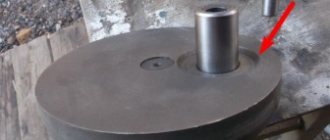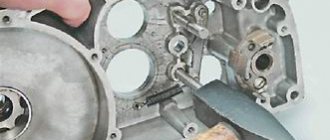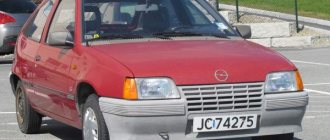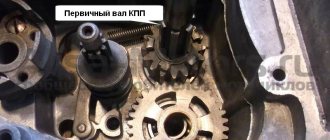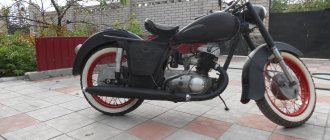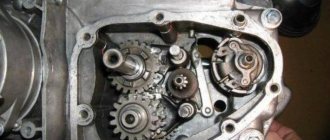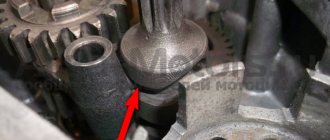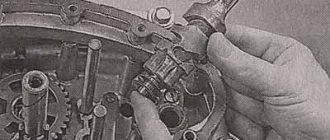Design and reliability
IZH Planet 2, as evidenced by the number in the model name, became the second motorcycle in the Izhevsk Planet series.
It differs from the “ancestor” of the family in greater comfort and power of the power unit , as well as an updated, more modern (for that period of time) design.
Thus, Planet 2 received a signature paint job, a muffler and wheel rims covered with decorative chrome, a polished crankcase cover, as well as brake covers and a carburetor casing with a layer of hammer enamel.
The motorcycle seat has become wider and more comfortable. Its finishing is made of colored textinite.
The second generation model is designed in such a way that its repair does not require special or specific tools , conditions or equipment.
The mechanics are quite simple and straightforward , and spare parts are produced in abundance.
IZh Planet 2 owes its excellent cross-country characteristics to good traction at low speeds, high suspension and competent gearbox design.
Among other things, the owners of the bike unanimously declare the highest reliability of the engine and its amazing durability. This is confirmed by the manufacturer, who provided a warranty for a mileage of 15 thousand kilometers or a year and a half of operation.
Specifications
The detailed characteristics of this motorcycle are summarized in the table:
| Characteristics and performance of the IZH Jupiter 3 motorcycle | ||
| Parameter | Unit change | Index |
| Length | mm | 2170 |
| Width | mm | 780 |
| Height | mm | 1175 |
| Wheelbase | mm | 1430 |
| Dry weight | kg | 162 |
| Ground clearance | mm | 135 |
| Power point | type | 2-cylinder, 2-stroke, |
| Lubrication system | type | together with fuel |
| Cooling system | type | air |
| Starting system | type | kickstarter |
| Supply system | type | carburetor, 1-carb., |
| Working volume | cube cm | 347 |
| Power | hp | 25 |
| Clutch | type | multi-disc |
| Transmission | type | Mechanical, 4-speed, with foot switch |
| Drive unit | type | Chain |
| Maximum speed | km/h | 120 |
| Volume of the tank | l | 18 |
Description of design
So, this motorcycle was first shown in 1971.
It was produced in two versions - “IZH Jupiter 3” and “IZH Jupiter 3K”.
They differed in that the “3K” was additionally equipped with a sidecar , but it had the ability to be detached from the motorcycle.
At that time, Jupiter 3 had a modern appearance and was well made, although it was based on its predecessor. All elements of the motorcycle were attached to a tubular frame.
To increase comfort, the front suspension travel was increased and the rear shock absorbers were made softer.
They changed the shape of the tank, it stopped being teardrop-shaped. But the headlight did not change; its housing continued to house the speedometer, ignition switch and warning lamps.
The seat is undivided, double . A rear fender with a brake light, turn signals and a license plate placed on it was attached to the seat body from below.
Turn signals on the IZH Jupiter family began to be installed precisely from the third model.
under the seat on both sides of the motorcycle , the left one was intended for installing the battery, and the right one was for storing keys.
The engine was located under the tank, which ensured that fuel flowed into the carburetor by gravity. To prevent spontaneous leakage of gasoline, a tap was placed on the tank.
The cylinders had an in-line arrangement. When designing a new engine for this motorcycle, the position of the cylinder fins was revised, which subsequently ensured better cooling .
One elbow came out of each of the cylinders, to which two exhaust pipes were screwed, mounted on the sides of the motorcycle under the footpegs.
The power system consisted of a single carburetor located behind the cylinders and connected to them by a pipe with a double outlet. In the base, the motorcycle came with protective covers covering the carburetor.
By reworking the engine, the designers managed to increase its power by 6 hp, which affected the speed; it increased to 120 km/h.
The gearbox was made integral with the engine. Torque was transmitted via a multi-plate clutch. The drive to the rear wheel was carried out by a chain.
The rear drive sprocket was housed in an aluminum housing.
The front suspension was made in the form of a telescopic fork, and the rear suspension was pendulum with two shock absorbers .
The brakes on both wheels are mechanically driven drums.
At one time , this motorcycle was awarded the State Quality Mark because it was reliable, easy to repair, and easy to start, compared to the IZH Planet.
Its only . It practically consisted of two contact systems, one for each cylinder.
This affected the convenience of installing the ignition; it was difficult to achieve the same advance angle on the cylinders.
The Kawasaki Versys 650 will be an excellent companion on long trips; you will find its technical characteristics in our review.
The bike that received the status of a “legendary” motorcycle:
Specifications
The middle class of the IZH Planet 2 model is confirmed by both the engine characteristics and the overall dimensions of the bike, which are:
The dry weight of the motorcycle is 155 kilograms, and the wheel size is 3.25-19.
Design features
At one time, IZH Planet 2 had very modern parameters.
The “heart” of the motorcycle was a two-stroke single-cylinder 346 cc air-cooled engine , the power of which reached 15 horsepower (4.2-4.6 thousand rpm).
This unit runs on a fuel mixture of gasoline and oil, which comes by gravity from an 18-liter tank.
Braking system - drum . The gearbox is a two-way, four-speed design that transmits rotation to the rear wheel via a chain.
The softness of movement is ensured by the original shock absorption system:
As already mentioned, the Planet 2 frame is an all-metal tubular structure.
The deep fenders of the motorcycle are also made of metal, since plastic was practically not used then.
Detailed information about the IZH Planet 2 power unit can be found in the following table.
| Technical characteristics of the IZH Planet 2 motorcycle | |
| Motor | Petrol |
| Working volume | 346 cm 3 |
| Bore and stroke | 72x85 mm |
| Compression | 6,7-7,0 |
| Fuel | Gasoline with oil (25:1) |
| Ignition | Battery |
| Maximum power | 15.5 horsepower |
| Maximum speed | 105 km/h |
| Fuel consumption | 5.5 liters (on the highway) |
One of the most remarkable models of the domestic motorcycle industry is IZH Junker, review and characteristics of the model.
The model of this domestic motorcycle was developed in 1974, and at that time it was a unique concept.
Planet 2 and Jupiter 2
The appearance of the representatives of the second generation of the Jupiter and Planet families, produced by the Izhevsk Machine-Building Enterprise, is almost identical .
The main difference between these motorcycles is the design of the power units.
So, the Planet 2 engine has one cylinder, while the Jupiter 2 engine is equipped with two.
The crew parts of both vehicles are unified. One-piece (welded) tubular frames are similar, but the motor mounting points are different, so the motors of the models cannot be swapped.
The Jupiter frame in the front part is equipped with a bracket for a stroller, which the Planet does not have.
Both motorcycles marked “2” are equipped with new designs of bearings and protective seals , as well as economical “K-36Zh” carburetors.
For each model, the manufacturer included additional spare parts in the form of a tire pressure gauge and a spare clutch cable.
The average person could distinguish Jupiter 2 from Planet 2 by the emblem on the gas tank of each model.
The Honda X 11 is the first bike to combine sporting and touring characteristics.
Having seen this wonderful motorcycle for the first time, it is difficult to remain indifferent to its appearance: https://themoto.net/moto/yaponskie/yamaha/varrior-xv-1700.html
Repair and tuning
Repairing a motorcycle is not difficult, but before you jump into tuning, you should think hard. Perhaps it's worth restoring an old bike instead of trying to bring it up to modern standards?
Repair
Izh motorcycles have always been famous for their maintainability. The p3 model is no exception to the rule - everything can be repaired in it, and no special tools are required for this.
Spare parts
Thirty-five years after the model was discontinued, there are still no problems with spare parts. Many parts fit from other Izh motorcycles, and the P3 itself has produced more than a million copies, so there are plenty of donors.
Tuning
Many owners reduce tuning Izh p3 to replacing some components with more modern and reliable ones. The donor is often Izh p5, due to the compatibility of the parts and their availability for sale. The standard carburetor, which requires frequent adjustments, is also sometimes replaced with some inexpensive modern analogue.
